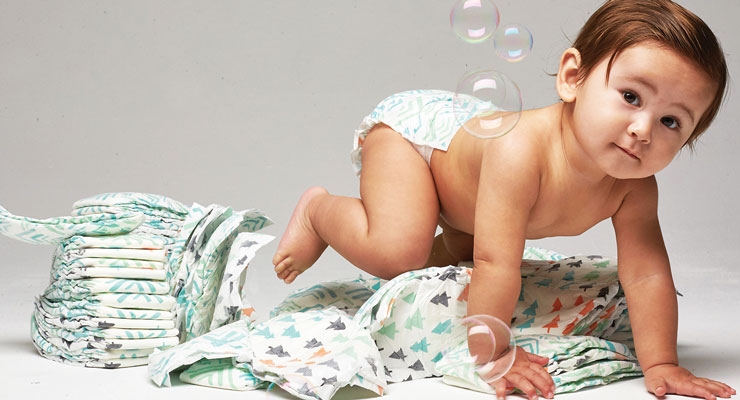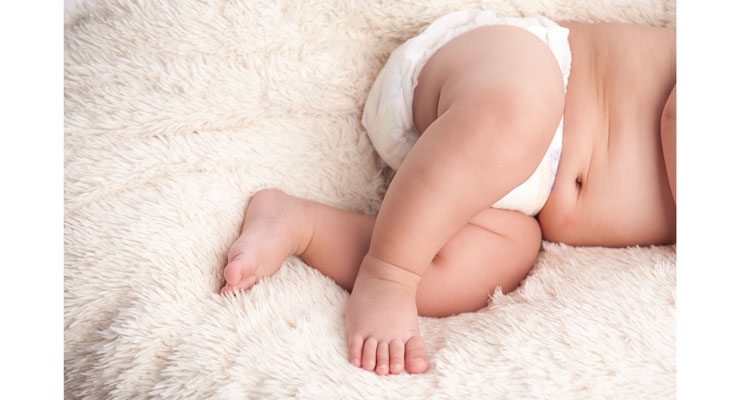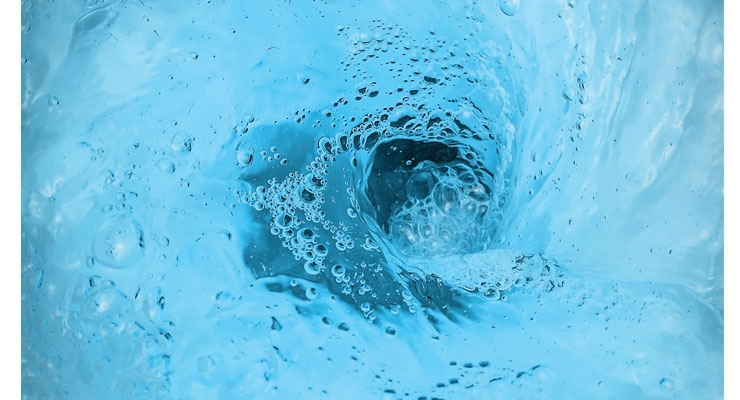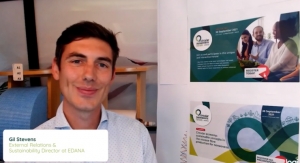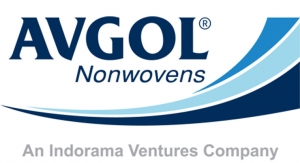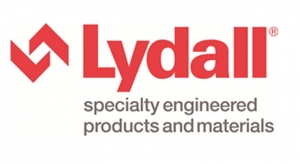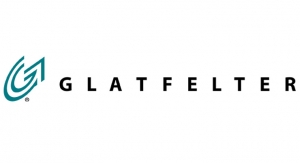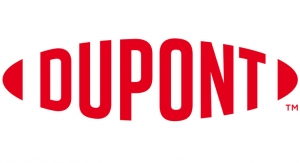Karen McIntyre, Editor12.01.16
Growth is certainly continuing in nonwovens. As producers continue to invest in already established regions like Southeast Asia, the U.S. and Europe, interest continues to build in new areas, like South Africa. Meanwhile, the development of new technologies for diapers—thanks to efforts put forth in China—as well as increased focus on areas like adult incontinence and flushable wipes continue to make headlines.
While many news stories were important to the global nonwovens industry, the following headlines stood out as having the most lasting impact on the shape of the future of nonwovens.
Investment Continues to Be Global
It is truly hard to belive that new lines keep coming in nonwovens—even after several years of the same. In no technology is this more apparent than spunmelt, the industry’s largest technology. The year 2016 saw new line investment announcements from Avgol in Israel and India, Fibertex Personal Care in Malaysia, Toray in Korea, Mitsui in Japan, Spunchem in South Africa, Fitesa in South Carolina and Berry Plastics in the U.S. and Spain—to name a few. These new investments respond to growth in hygiene, led by increased use of adult incontinence products, as well as the expanded use of nonwovens in existing hygiene applications like baby diapers.
Spunmelt is not the only technology in expansion mode. The spunlace market continues to grow thanks to new investments by Mogul in the U.S. and Turkey and newcomer Zhejiang Wang Jin in China. These new lines are not only looking to target growth in the wipes market but also in new application areas in hygiene and industrial areas.
Speaking of industrial areas, investment has been ripe here as well. Don & Low has added a new meltblown line in the U.K. while newcomer Carver Non-Woven has established a new site in Fremont, IN, to create new solutions in automotives and building applications.
New Diaper Players
After years—maybe even decades—of status quo in the diaper industry, 2016 saw some considerable changes in the world’s largest market for nonwovens. Among these shifts is the entry of two notable consumer products companies—Unilever and S.C. Johnson & Sons—which both made acquisitions that will add a diaper brand to their businesses. In September, S.C. Johnson said it would purchase Babyganics, a manufacturer of a range of baby care products, including diapers. While this diaper business is small, it is S.C. Johnson’s interest—after so long being content to remain in household cleaning—in a line centered on babies makes this acquisition interesting.
For Unilever, the acquisition of Seventh Generation not only provides it with a diaper brand, but also with an environmentally friendly product line. It is too soon to say what Unilever will do with these “green” diapers, but the market is certainly paying attention, especially considering the acquisition came just as Unilever was the rumored buyer of the Honest Company, another small diaper manufacturer.
And, just as the Honest Company—which seems to still be for sale—began offering a new brand of diapers to parents a few years ago, earlier this year Parasol, a Walnut Creek, CA-based company offering premium baby essentials via monthly subscription, launched its first line of diapers and wipes. Like Honest, Parasol is taking advantage of parents’ increasing scrutiny of ingredients in personal care items, and where they’re sourced, by being more transparent.
“Parasol was borne of a personal need,” says the company’s CEO Lisa Hom, a mother of three. “I couldn’t find any baby or family brands that combined style with comfort and performance. I saw a huge opportunity in diapers, and when I met our cofounders—James Guo and Jessica Hung—I knew this was my calling. They had been working on Parasol behind the scenes for a number of years, developing a newly imagined diaper that they understood was missing in the American market.”
To develop these diapers Parasol partnered with Drylock Technologies of Zele, Belgium—maker of the first fluffless baby diaper—to create an ultra-soft, low-fluff diaper. Parasol diapers, which are manufactured at Drylock’s facility in the Czech Republic, feature an extremely soft three-dimensionally embossed topsheet made through the air bonding process.
Chinese Create Demand for Soft Diapers
Calls for softer diapers, originating first in China, but soon spreading around the globe, has led to the creation of new technologies among suppliers. As many Chinese producers are using thermal bonded nonwovens—which is significantly more expensive than more commonly used spunmelt nonwovens—Western producers are offering their own set of alternatives.
Nonwovens machinery specialist Reicofil has introduced new developments in highloft spunbond technology that creates thick, soft nonwovens, according Michael Maas, operations director research and development at Reicofil.
While voluminous nonwovens generally consist of self-crimping fibers, the Reicofil technology uses filaments from two different raw materials produced in a side-by-side structure and bonded using hot air or a special embossing calendar. The result is a premium nonwoven that can be used as a top and backsheet in premium diapers.
Maas comments: “In the future, our customers will have to offer soft nonwoven products all over the world. It is critical to their businesses to adopt developments early and to be innovative. We already started years ago to develop the technology basis for softer products. Today we are able to offer various solutions for different customer needs.”
On the nonwovens front, Berry Plastics announced this year it would expanding its portfolio of soft products, bringing new capabilities and innovations to its European product portfolio. These developments have been made possible through multiple acquisitions and development initiatives. These new air through bonded nonwovens, that offer softness, opacity, uniformity and bulk, will be launched over the next six to 12 months.
“Consumers are expecting more and more from their hygiene products today. The requirements put on our customers to meet these high expectations in unique and value added ways are a constant challenge,” says Sean Imlay, vice president, global hygiene, Berry Plastics Health, Hygiene and Specialties Division. “The global portfolio assembled by Berry Plastics is unmatched in the industry in its variety and truly offers something for every need.”
The products will be launched in part through the help of a new air-through bonded line which is coming onstream in Italy.
Avgol is another nonwovens producer offering a soft solution for baby diapers. In 2016, the Israeli producer launched the Avgol Lux family of nonwoven fabrics which was designed to provide hygiene product manufacturers with a new visually distinct soft touch fabric solution.
Based on spunmelt technology, these products are suitable for topsheet, backsheet and leg cuff applications, as well as ear and landing zone substrates, meeting the needs of the latest hygiene product design trends around the world, according to the company.
Industry Addresses Diaper, Feminine Hygiene Need
Earlier this year, U.S. president Barack Obama urged diaper manufacturers and retailers to make diapers more accessible to low income families. In response, online retailer Jet.com partnered with Cuties diapers to help deliver high quality diapers in the most effective way possible. By taking measures like removing expensive graphics from packaging and adding more diapers per box, Jet.com and Cuties maker First Quality have created the Cuties Economy Plus Pack, bringing the price per diaper from as high as 30-50 cents to 13-17 cents without sacrificing quality.
Citing statistics that one in three families lack sufficient access to diapers, the president said he is enlisting the help of diaper manufacturers and non-profits to put more children in diapers. The Cuties Economy Plus Pack became available on the Jet.com website in late April. These packs will also be available for discounted purchasing by non-profit organizations.
Diaper industry insiders believe that more than 15 million diapers will be ordered by local diaper bank networks through the program. President Obama has also asked Congress to earmark $10 million to test effective ways to get diapers in more poor families’ homes. Other diaper brands are also offering assistance.
Also heading the president’s call is Kimberly-Clark which said in April it would donate 22 million Huggies diapers to the National Diaper Bank Network, and the Honest Company has supplied diapers to several banks.
K-C has also addressed the need for better access to feminine hygiene products. In July, the U by Kotex brand partnered with DoSomething.org on Power to the Period, the first-ever, national period products donation drive and second installment of the U by Kotex Period Projects—a groundbreaking series of projects, each inspired by a woman who shares the brand’s passion for creating real change.
Power to the Period helped provide period products for many of the 3.5 million Americans in need by encouraging people to collect and donate extra packages of products to homeless shelters this fall. The drive collected over 200,000 items
South Africa is the Next Nonwovens Hot Spot
The nonwovens industry is not just investing in new capacity. It is also investing in geographies. In past year, the focus has been on China, Latin America, North Africa and Southeast Asia—and these areas continue to have vibrant nonwovens industries—but in 2016, South Africa emerged as the next great growth area for nonwovens thanks to investment by two players—locally owned Spunchem and Czech-based Pegas.
According to Euromonitor, South Africa’s hygiene market will see a positive 6% CAGR value growth between 2015 and 2020. The unmet market potential in disposable hygiene in the country is valued at more than $400 million, and the unmet potential in volume terms is estimated to be more than 900 million units in diapers, 1.3 billion units in sanitary protection items and over 70 million units in adult incontinence products.
Western hygiene manufacturers have had a presence in the country for several years. P&G began making baby diapers in Johannesburg in 2009 and established a large manufacturing hub for products including feminine hygiene items and laundry detergents there in 2014. Last year, P&G had the no. 1 position in the South African baby diaper market with a 41% marketshare.
P&G rival Kimberly-Clark has been making feminine hygiene products and baby diapers, among other things, at a facility in Epping Mill since at least 2013 and currently has a no. 2 position in the baby diaper market. Coming in at no. 3 is the Cuddlers brand, which is evenly owned by Sweden’s SCA and South African firm Nampack.
David Price, a nonwovens industry consultant specialized in the spunbond and spunmelt markets, sees room for two new nonwovens suppliers in the South African hygiene market, which is now fed through imports, mainly from North Africa, South America and Asia—although one local player Cordustex, has operated a spunbond line there since 1995.
“It is a standard play to replace imports,” Price says. “The market is big enough to justify local production.”
Spunchem, whose roots are mainly in industrial nonwovens, says it enlisted the help of a top-tier diaper manufacturer to run trials using its new technology in diaper manufacturing. As its first hygiene-centric investment neared completion this summer, the company has already said it will add a second line sometime in 2018. Spunchem has been making spunbond nonwovens for industrial markets for 20 years and currently operates three spunbond lines dedicated to these markets. No supplier has been named for the new line.
Meanwhile, Pegas announced this year its board of directors had voted to establish a South African subsidiary, a move that executives feel will result in the purchase of land and eventual construction of a small-scale Reicofil 4 spunmelt line in the country. Pegas already has a North African operation in Egypt.
According to Price, Pegas can offer international scope and sophisticated and cost efficient Reicofil technology to this growing market while Spunchem, with its role as a locally owned company, can offer stellar market know-how and cultural awareness.
“These companies don’t decide to start up these operations without doing their research,” he adds. “They are negotiating, they are looking for partnerships. It’s a smart decision.”
Flushability Efforts Continue
The topic of flushability continues to be one on the minds of nonwovens professionals, particularly those involved in the disposable wipes market. At the forefront of efforts to educate consumers on what should and should not be flushed is INDA, the Association of the Nonwoven Fabrics Industry, which has been involved in these efforts for more than a decade. The association is currently working with the wastewater industry to develop a fourth edition of flushability assessment guidelines which include testing requirements and labeling protocols—not only for flushable items, but for all wipes.
In fact, it is the 93% of wipes tonnage that is not marketed as flushable that INDA president Dave Rousse is most concerned about. “We are working with these manufacturers, converters and brand owners because there are increased risks if they don’t label their products under our Code of Practice,” he says. “The entire wipes industry needs to pay attention to this.”
While there has been legal action against flushable wipes and their alleged impact on sewers, so far they have all been settled without money changing hands, industry watchdogs say, because there is no proof that flushable wipes—ones that have passed the flushability guidelines put forth by INDA—are contributing to these problems. This cannot be said for wipes that have not passed the testing requirements, however. It is these wipes, combined with other items like facial tissue and paper towels, that should not be flushed but are being found in sewer clogs.
Experts on both sides of the aisle say that labeling wipes need to be improved. Rousse has been meeting diligently with makers of both flushable and non-flushable wipes to ensure they are properly labeled and INDA has mandated hat all baby wipes—whether they disperse or not—be labeled as not flushable.
The wastewater community, meanwhile, has made labeling a top priority in their meetings with wipes professionals.
“The labels are not doing their job and they are not working as well as they should because they are often not being placed in the right area,” Claudio Ternieden, director of government affairs, Water Environment Federation (WEF), explains. In addition to new labeling practices, the next edition of the flushability guidelines will include more stringent testing methods that better replicate the conditions of an actual sewer system.
As the industry continues to work on these guidelines, flushable wipes continue to fight legislative challenges. The most recent of these is a bill in the New York City Council that would prohibit the sale of flushable wipes in the city.
New Definition of Nonwovens Considered
At the Global Nonwovens Summit, which was held in Boston, MA, in conjunction with IDEA 2016 in April, EDANA president Pierre Wiertz provided an update on efforts to establish a new definition and classification system for nonwovens. These efforts are being led by a collaboration of EDANA in Europe, INDA in North America and ANFA, the Asian Nonwoven Fabrics Industry.
According to Wiertz, the associations started these efforts to reverse the current definition for nonwovens, which define the materials as what they are not (woven) rather than what they are. Also under review is an outdated classification system which groups nonwovens under the textiles umbrella, restricting freedom in raw material usage.
Currently nonwovens and related products are found in many of the World Customization Organization (WCO) harmonization standards codes based on their process type. And, products that use nonwovens—like garments, linens, or hygiene items—are spread across even more categories. This makes tracking trade numbers difficult and often nonwovens face restrictions without reason.
The three associations first met in Shanghai last spring during ANEX and again in Boston for IDEA to discuss this issue. At the GNS, Wiertz unveiled the new definition for nonwovens: “an engineered fibrous assembly which has been given a designed level of structural integrity by physical and/or chemical means with the exclusion of paper, woven or knitted materials.” He told the audience that this new definition will serve as a technical reference and a guideline for use in trade and customs purposes.
Now that the definition has been approved, the journey to a new official classification will not be short. According to Wiertz, there is a five-year window to take the new definition to the World Customs Organization (WCO) and align it with the International Standardization Organization (ISO) and Harmonization Standards. He hopes to see this process begin next year and continue until 2022. The groups have already made initial contacts with the WCO and are working with the ISO on creating an alternative solution.
Long term, the goal is to consolidate and harmonize tariff headings to take into account actual product specifications and categories. This may mean creating a dedicated heading for nonwovens outside of textiles or paper. There have already been minor wins—absorbent hygiene products have been taken out of Chapter 48 and grouped together under their own heading, Wiertz added.
E-Commerce Influences Diaper Sales
The world wide web and e-commerce have made an impact on both consumers and product manufacturers, and this can especially be seen in the baby diaper market. More and more parents and caregivers are purchasing diapers online for reasons including convenience and the ability to compare prices at the click of a button, while newcomers to the market, like the Honest Company, are kicking their businesses off on the internet.
A recent study from Nielsen on the baby products market points out that while global baby care consumers are more likely to buy baby items in a physical store, consumers are starting to make the switch to online channels. According to a global survey they conducted, the Asia-Pacific region leads the pack in terms of online purchases for baby products, with 31% of respondents reporting to have bought baby diapers online. Furthermore, 16% of respondents in North America, 15% in Latin America, 14% in Africa/Middle East and 13% in Europe have bought diapers online.
According to industry consultant Pricie Hanna, an online store is really the only option a newcomer to the diaper market has. “Diapers are such a huge category. If a diaper manufacturer were to walk into a major retailer and say, ‘Here’s my new diaper,’ the retailer would say, ‘What’s your advertising budget? Are you prepared to cover all of our stores nationwide overnight?’ It’s just too big of a challenge to start that way as a branded product.”
Meanwhile, Hanna says for established players online sales are becoming more important to the extent that they provide strong differentiation or highly competitive pricing for bulk product bundle shipments or subscriptions for ongoing product delivery. “There’s a limit to how much consumers will go for the convenience of internet ordering and home delivery beyond that early ‘I’ve got a newborn at home’ stage if pricing isn’t competitive,” she adds. “Amazon’s diaper pricing used to be rather high, but now consumers can get all the top brands and competitive pricing as long as they do it through an Amazon Prime subscription. The other leading retailers have also introduced competitive diaper subscription and delivery services.”
Growth Continues for Nonwovens
Global demand for nonwovens is forecast to rise 5.3% annually to nine metric tons in 2017. However, there is a great deal of variation among different regions and countries, according to market research.
Countries with developed manufacturing sectors and a population with relatively high personal incomes, such as the U.S., Japan, and Western European countries, have well established nonwovens markets. In these areas, nonwovens are prevalent in the production of a variety of goods, and individuals have the financial capability to purchase nonwoven-based consumer items.
Most experts agree that demand for nonwovens in developed countries is expected to accelerate from the pace set from 2007-2012, when recessionary conditions for most of the period brought outright declines in manufacturing and construction activity. Despite the acceleration, growth in nonwovens demand in developed areas will remain well below the global average as continued industrialization and increasing personal incomes in developing countries promote nonwovens demand.
Ongoing economic advances in China and other developing countries will promote the development of manufacturing sectors, providing opportunities for nonwovens in a variety of goods, such as filters. With respect to consumer goods, rising incomes and standards of living will propel sales of purchase convenience items, promote the use of disposable infant diapers among other items that are made with significant amounts of nonwovens.
The largest regional market for nonwovens is the Asia Pacific region, with 39% of the global total. Two of the top three nonwovens consuming countries—China and Japan—are located in the region. Advances will be driven by China, which will account for 60% of the regional sales in 2017 and nearly 40% of additional global volume demand through 2017.
While many news stories were important to the global nonwovens industry, the following headlines stood out as having the most lasting impact on the shape of the future of nonwovens.
Investment Continues to Be Global
It is truly hard to belive that new lines keep coming in nonwovens—even after several years of the same. In no technology is this more apparent than spunmelt, the industry’s largest technology. The year 2016 saw new line investment announcements from Avgol in Israel and India, Fibertex Personal Care in Malaysia, Toray in Korea, Mitsui in Japan, Spunchem in South Africa, Fitesa in South Carolina and Berry Plastics in the U.S. and Spain—to name a few. These new investments respond to growth in hygiene, led by increased use of adult incontinence products, as well as the expanded use of nonwovens in existing hygiene applications like baby diapers.
Spunmelt is not the only technology in expansion mode. The spunlace market continues to grow thanks to new investments by Mogul in the U.S. and Turkey and newcomer Zhejiang Wang Jin in China. These new lines are not only looking to target growth in the wipes market but also in new application areas in hygiene and industrial areas.
Speaking of industrial areas, investment has been ripe here as well. Don & Low has added a new meltblown line in the U.K. while newcomer Carver Non-Woven has established a new site in Fremont, IN, to create new solutions in automotives and building applications.
New Diaper Players
After years—maybe even decades—of status quo in the diaper industry, 2016 saw some considerable changes in the world’s largest market for nonwovens. Among these shifts is the entry of two notable consumer products companies—Unilever and S.C. Johnson & Sons—which both made acquisitions that will add a diaper brand to their businesses. In September, S.C. Johnson said it would purchase Babyganics, a manufacturer of a range of baby care products, including diapers. While this diaper business is small, it is S.C. Johnson’s interest—after so long being content to remain in household cleaning—in a line centered on babies makes this acquisition interesting.
For Unilever, the acquisition of Seventh Generation not only provides it with a diaper brand, but also with an environmentally friendly product line. It is too soon to say what Unilever will do with these “green” diapers, but the market is certainly paying attention, especially considering the acquisition came just as Unilever was the rumored buyer of the Honest Company, another small diaper manufacturer.
And, just as the Honest Company—which seems to still be for sale—began offering a new brand of diapers to parents a few years ago, earlier this year Parasol, a Walnut Creek, CA-based company offering premium baby essentials via monthly subscription, launched its first line of diapers and wipes. Like Honest, Parasol is taking advantage of parents’ increasing scrutiny of ingredients in personal care items, and where they’re sourced, by being more transparent.
“Parasol was borne of a personal need,” says the company’s CEO Lisa Hom, a mother of three. “I couldn’t find any baby or family brands that combined style with comfort and performance. I saw a huge opportunity in diapers, and when I met our cofounders—James Guo and Jessica Hung—I knew this was my calling. They had been working on Parasol behind the scenes for a number of years, developing a newly imagined diaper that they understood was missing in the American market.”
To develop these diapers Parasol partnered with Drylock Technologies of Zele, Belgium—maker of the first fluffless baby diaper—to create an ultra-soft, low-fluff diaper. Parasol diapers, which are manufactured at Drylock’s facility in the Czech Republic, feature an extremely soft three-dimensionally embossed topsheet made through the air bonding process.
Chinese Create Demand for Soft Diapers
Calls for softer diapers, originating first in China, but soon spreading around the globe, has led to the creation of new technologies among suppliers. As many Chinese producers are using thermal bonded nonwovens—which is significantly more expensive than more commonly used spunmelt nonwovens—Western producers are offering their own set of alternatives.
Nonwovens machinery specialist Reicofil has introduced new developments in highloft spunbond technology that creates thick, soft nonwovens, according Michael Maas, operations director research and development at Reicofil.
While voluminous nonwovens generally consist of self-crimping fibers, the Reicofil technology uses filaments from two different raw materials produced in a side-by-side structure and bonded using hot air or a special embossing calendar. The result is a premium nonwoven that can be used as a top and backsheet in premium diapers.
Maas comments: “In the future, our customers will have to offer soft nonwoven products all over the world. It is critical to their businesses to adopt developments early and to be innovative. We already started years ago to develop the technology basis for softer products. Today we are able to offer various solutions for different customer needs.”
On the nonwovens front, Berry Plastics announced this year it would expanding its portfolio of soft products, bringing new capabilities and innovations to its European product portfolio. These developments have been made possible through multiple acquisitions and development initiatives. These new air through bonded nonwovens, that offer softness, opacity, uniformity and bulk, will be launched over the next six to 12 months.
“Consumers are expecting more and more from their hygiene products today. The requirements put on our customers to meet these high expectations in unique and value added ways are a constant challenge,” says Sean Imlay, vice president, global hygiene, Berry Plastics Health, Hygiene and Specialties Division. “The global portfolio assembled by Berry Plastics is unmatched in the industry in its variety and truly offers something for every need.”
The products will be launched in part through the help of a new air-through bonded line which is coming onstream in Italy.
Avgol is another nonwovens producer offering a soft solution for baby diapers. In 2016, the Israeli producer launched the Avgol Lux family of nonwoven fabrics which was designed to provide hygiene product manufacturers with a new visually distinct soft touch fabric solution.
Based on spunmelt technology, these products are suitable for topsheet, backsheet and leg cuff applications, as well as ear and landing zone substrates, meeting the needs of the latest hygiene product design trends around the world, according to the company.
Industry Addresses Diaper, Feminine Hygiene Need
Earlier this year, U.S. president Barack Obama urged diaper manufacturers and retailers to make diapers more accessible to low income families. In response, online retailer Jet.com partnered with Cuties diapers to help deliver high quality diapers in the most effective way possible. By taking measures like removing expensive graphics from packaging and adding more diapers per box, Jet.com and Cuties maker First Quality have created the Cuties Economy Plus Pack, bringing the price per diaper from as high as 30-50 cents to 13-17 cents without sacrificing quality.
Citing statistics that one in three families lack sufficient access to diapers, the president said he is enlisting the help of diaper manufacturers and non-profits to put more children in diapers. The Cuties Economy Plus Pack became available on the Jet.com website in late April. These packs will also be available for discounted purchasing by non-profit organizations.
Diaper industry insiders believe that more than 15 million diapers will be ordered by local diaper bank networks through the program. President Obama has also asked Congress to earmark $10 million to test effective ways to get diapers in more poor families’ homes. Other diaper brands are also offering assistance.
Also heading the president’s call is Kimberly-Clark which said in April it would donate 22 million Huggies diapers to the National Diaper Bank Network, and the Honest Company has supplied diapers to several banks.
K-C has also addressed the need for better access to feminine hygiene products. In July, the U by Kotex brand partnered with DoSomething.org on Power to the Period, the first-ever, national period products donation drive and second installment of the U by Kotex Period Projects—a groundbreaking series of projects, each inspired by a woman who shares the brand’s passion for creating real change.
Power to the Period helped provide period products for many of the 3.5 million Americans in need by encouraging people to collect and donate extra packages of products to homeless shelters this fall. The drive collected over 200,000 items
South Africa is the Next Nonwovens Hot Spot
The nonwovens industry is not just investing in new capacity. It is also investing in geographies. In past year, the focus has been on China, Latin America, North Africa and Southeast Asia—and these areas continue to have vibrant nonwovens industries—but in 2016, South Africa emerged as the next great growth area for nonwovens thanks to investment by two players—locally owned Spunchem and Czech-based Pegas.
According to Euromonitor, South Africa’s hygiene market will see a positive 6% CAGR value growth between 2015 and 2020. The unmet market potential in disposable hygiene in the country is valued at more than $400 million, and the unmet potential in volume terms is estimated to be more than 900 million units in diapers, 1.3 billion units in sanitary protection items and over 70 million units in adult incontinence products.
Western hygiene manufacturers have had a presence in the country for several years. P&G began making baby diapers in Johannesburg in 2009 and established a large manufacturing hub for products including feminine hygiene items and laundry detergents there in 2014. Last year, P&G had the no. 1 position in the South African baby diaper market with a 41% marketshare.
P&G rival Kimberly-Clark has been making feminine hygiene products and baby diapers, among other things, at a facility in Epping Mill since at least 2013 and currently has a no. 2 position in the baby diaper market. Coming in at no. 3 is the Cuddlers brand, which is evenly owned by Sweden’s SCA and South African firm Nampack.
David Price, a nonwovens industry consultant specialized in the spunbond and spunmelt markets, sees room for two new nonwovens suppliers in the South African hygiene market, which is now fed through imports, mainly from North Africa, South America and Asia—although one local player Cordustex, has operated a spunbond line there since 1995.
“It is a standard play to replace imports,” Price says. “The market is big enough to justify local production.”
Spunchem, whose roots are mainly in industrial nonwovens, says it enlisted the help of a top-tier diaper manufacturer to run trials using its new technology in diaper manufacturing. As its first hygiene-centric investment neared completion this summer, the company has already said it will add a second line sometime in 2018. Spunchem has been making spunbond nonwovens for industrial markets for 20 years and currently operates three spunbond lines dedicated to these markets. No supplier has been named for the new line.
Meanwhile, Pegas announced this year its board of directors had voted to establish a South African subsidiary, a move that executives feel will result in the purchase of land and eventual construction of a small-scale Reicofil 4 spunmelt line in the country. Pegas already has a North African operation in Egypt.
According to Price, Pegas can offer international scope and sophisticated and cost efficient Reicofil technology to this growing market while Spunchem, with its role as a locally owned company, can offer stellar market know-how and cultural awareness.
“These companies don’t decide to start up these operations without doing their research,” he adds. “They are negotiating, they are looking for partnerships. It’s a smart decision.”
Flushability Efforts Continue
The topic of flushability continues to be one on the minds of nonwovens professionals, particularly those involved in the disposable wipes market. At the forefront of efforts to educate consumers on what should and should not be flushed is INDA, the Association of the Nonwoven Fabrics Industry, which has been involved in these efforts for more than a decade. The association is currently working with the wastewater industry to develop a fourth edition of flushability assessment guidelines which include testing requirements and labeling protocols—not only for flushable items, but for all wipes.
In fact, it is the 93% of wipes tonnage that is not marketed as flushable that INDA president Dave Rousse is most concerned about. “We are working with these manufacturers, converters and brand owners because there are increased risks if they don’t label their products under our Code of Practice,” he says. “The entire wipes industry needs to pay attention to this.”
While there has been legal action against flushable wipes and their alleged impact on sewers, so far they have all been settled without money changing hands, industry watchdogs say, because there is no proof that flushable wipes—ones that have passed the flushability guidelines put forth by INDA—are contributing to these problems. This cannot be said for wipes that have not passed the testing requirements, however. It is these wipes, combined with other items like facial tissue and paper towels, that should not be flushed but are being found in sewer clogs.
Experts on both sides of the aisle say that labeling wipes need to be improved. Rousse has been meeting diligently with makers of both flushable and non-flushable wipes to ensure they are properly labeled and INDA has mandated hat all baby wipes—whether they disperse or not—be labeled as not flushable.
The wastewater community, meanwhile, has made labeling a top priority in their meetings with wipes professionals.
“The labels are not doing their job and they are not working as well as they should because they are often not being placed in the right area,” Claudio Ternieden, director of government affairs, Water Environment Federation (WEF), explains. In addition to new labeling practices, the next edition of the flushability guidelines will include more stringent testing methods that better replicate the conditions of an actual sewer system.
As the industry continues to work on these guidelines, flushable wipes continue to fight legislative challenges. The most recent of these is a bill in the New York City Council that would prohibit the sale of flushable wipes in the city.
New Definition of Nonwovens Considered
At the Global Nonwovens Summit, which was held in Boston, MA, in conjunction with IDEA 2016 in April, EDANA president Pierre Wiertz provided an update on efforts to establish a new definition and classification system for nonwovens. These efforts are being led by a collaboration of EDANA in Europe, INDA in North America and ANFA, the Asian Nonwoven Fabrics Industry.
According to Wiertz, the associations started these efforts to reverse the current definition for nonwovens, which define the materials as what they are not (woven) rather than what they are. Also under review is an outdated classification system which groups nonwovens under the textiles umbrella, restricting freedom in raw material usage.
Currently nonwovens and related products are found in many of the World Customization Organization (WCO) harmonization standards codes based on their process type. And, products that use nonwovens—like garments, linens, or hygiene items—are spread across even more categories. This makes tracking trade numbers difficult and often nonwovens face restrictions without reason.
The three associations first met in Shanghai last spring during ANEX and again in Boston for IDEA to discuss this issue. At the GNS, Wiertz unveiled the new definition for nonwovens: “an engineered fibrous assembly which has been given a designed level of structural integrity by physical and/or chemical means with the exclusion of paper, woven or knitted materials.” He told the audience that this new definition will serve as a technical reference and a guideline for use in trade and customs purposes.
Now that the definition has been approved, the journey to a new official classification will not be short. According to Wiertz, there is a five-year window to take the new definition to the World Customs Organization (WCO) and align it with the International Standardization Organization (ISO) and Harmonization Standards. He hopes to see this process begin next year and continue until 2022. The groups have already made initial contacts with the WCO and are working with the ISO on creating an alternative solution.
Long term, the goal is to consolidate and harmonize tariff headings to take into account actual product specifications and categories. This may mean creating a dedicated heading for nonwovens outside of textiles or paper. There have already been minor wins—absorbent hygiene products have been taken out of Chapter 48 and grouped together under their own heading, Wiertz added.
E-Commerce Influences Diaper Sales
The world wide web and e-commerce have made an impact on both consumers and product manufacturers, and this can especially be seen in the baby diaper market. More and more parents and caregivers are purchasing diapers online for reasons including convenience and the ability to compare prices at the click of a button, while newcomers to the market, like the Honest Company, are kicking their businesses off on the internet.
A recent study from Nielsen on the baby products market points out that while global baby care consumers are more likely to buy baby items in a physical store, consumers are starting to make the switch to online channels. According to a global survey they conducted, the Asia-Pacific region leads the pack in terms of online purchases for baby products, with 31% of respondents reporting to have bought baby diapers online. Furthermore, 16% of respondents in North America, 15% in Latin America, 14% in Africa/Middle East and 13% in Europe have bought diapers online.
According to industry consultant Pricie Hanna, an online store is really the only option a newcomer to the diaper market has. “Diapers are such a huge category. If a diaper manufacturer were to walk into a major retailer and say, ‘Here’s my new diaper,’ the retailer would say, ‘What’s your advertising budget? Are you prepared to cover all of our stores nationwide overnight?’ It’s just too big of a challenge to start that way as a branded product.”
Meanwhile, Hanna says for established players online sales are becoming more important to the extent that they provide strong differentiation or highly competitive pricing for bulk product bundle shipments or subscriptions for ongoing product delivery. “There’s a limit to how much consumers will go for the convenience of internet ordering and home delivery beyond that early ‘I’ve got a newborn at home’ stage if pricing isn’t competitive,” she adds. “Amazon’s diaper pricing used to be rather high, but now consumers can get all the top brands and competitive pricing as long as they do it through an Amazon Prime subscription. The other leading retailers have also introduced competitive diaper subscription and delivery services.”
Growth Continues for Nonwovens
Global demand for nonwovens is forecast to rise 5.3% annually to nine metric tons in 2017. However, there is a great deal of variation among different regions and countries, according to market research.
Countries with developed manufacturing sectors and a population with relatively high personal incomes, such as the U.S., Japan, and Western European countries, have well established nonwovens markets. In these areas, nonwovens are prevalent in the production of a variety of goods, and individuals have the financial capability to purchase nonwoven-based consumer items.
Most experts agree that demand for nonwovens in developed countries is expected to accelerate from the pace set from 2007-2012, when recessionary conditions for most of the period brought outright declines in manufacturing and construction activity. Despite the acceleration, growth in nonwovens demand in developed areas will remain well below the global average as continued industrialization and increasing personal incomes in developing countries promote nonwovens demand.
Ongoing economic advances in China and other developing countries will promote the development of manufacturing sectors, providing opportunities for nonwovens in a variety of goods, such as filters. With respect to consumer goods, rising incomes and standards of living will propel sales of purchase convenience items, promote the use of disposable infant diapers among other items that are made with significant amounts of nonwovens.
The largest regional market for nonwovens is the Asia Pacific region, with 39% of the global total. Two of the top three nonwovens consuming countries—China and Japan—are located in the region. Advances will be driven by China, which will account for 60% of the regional sales in 2017 and nearly 40% of additional global volume demand through 2017.

